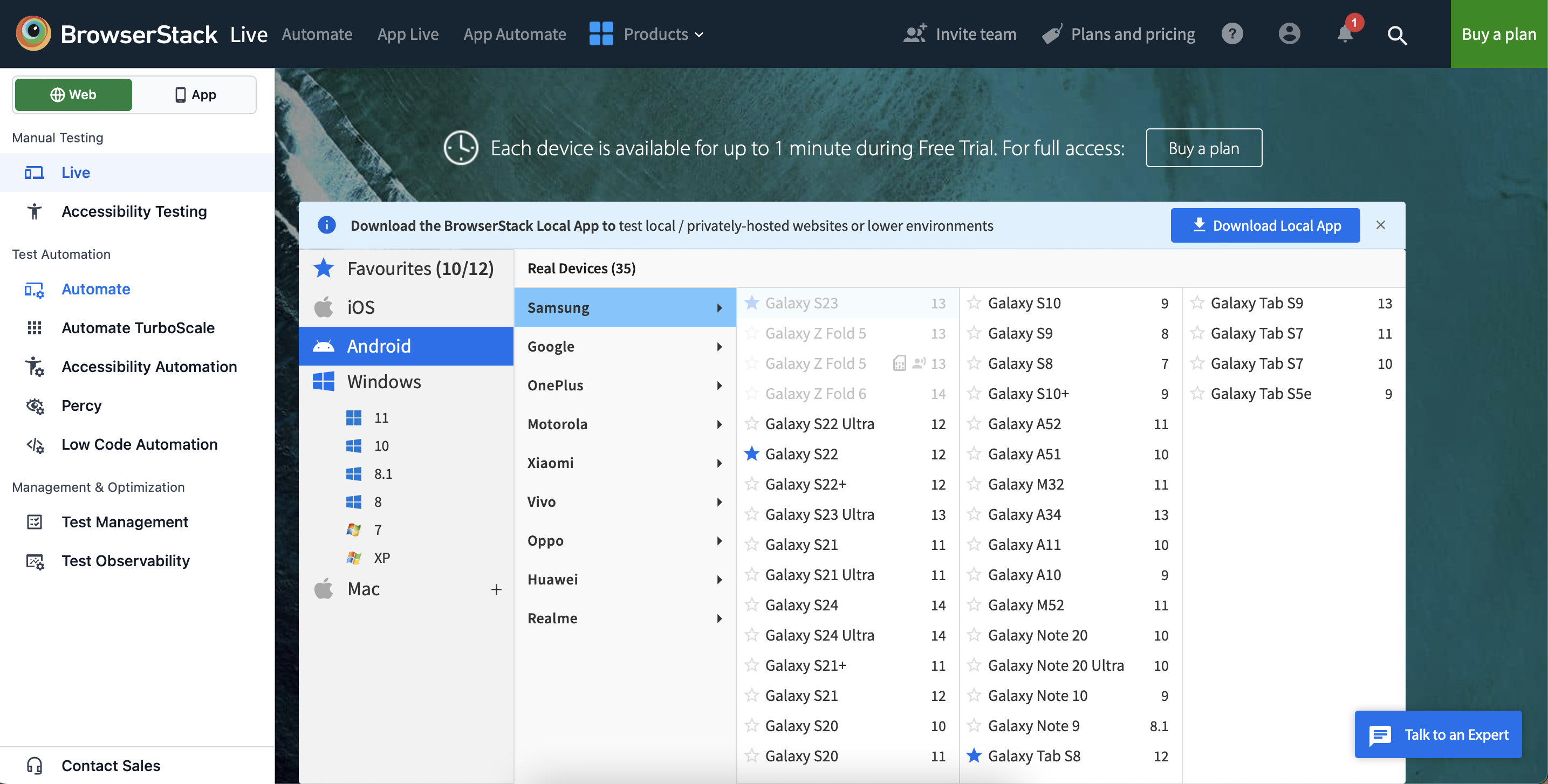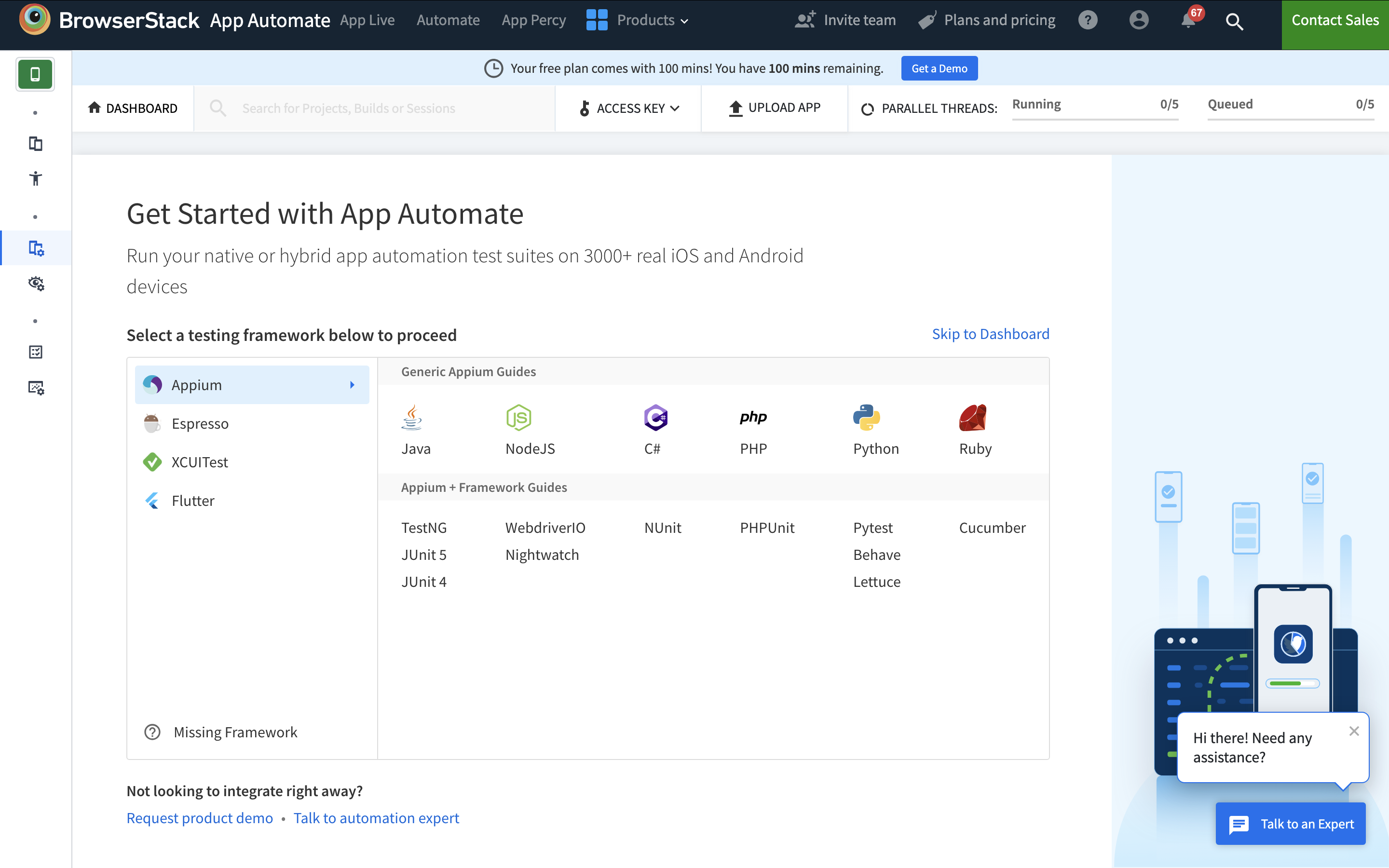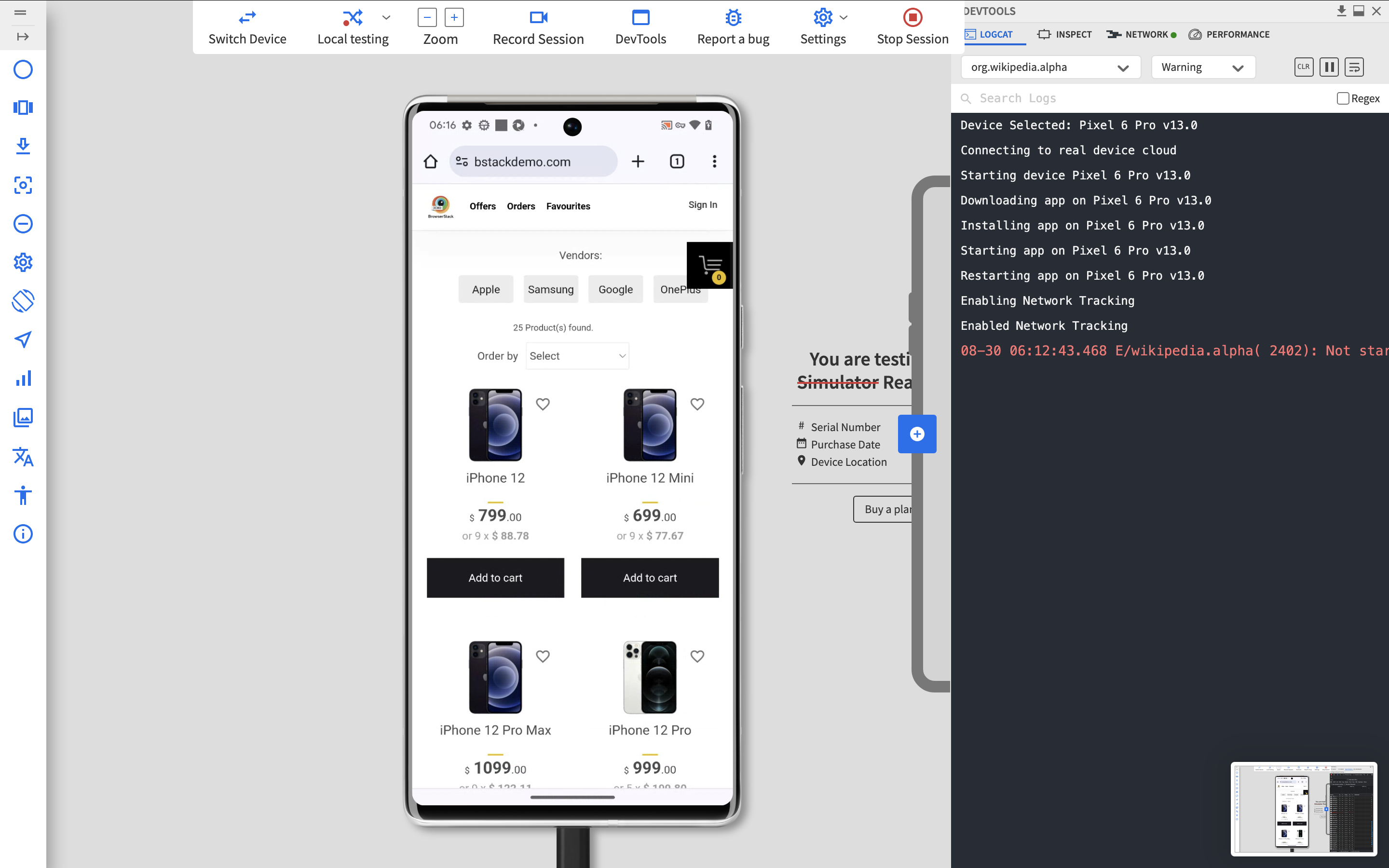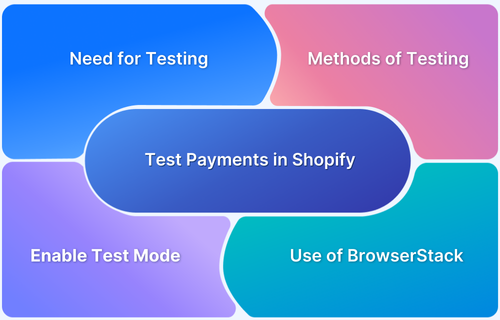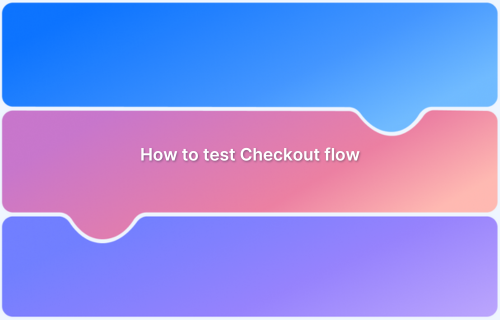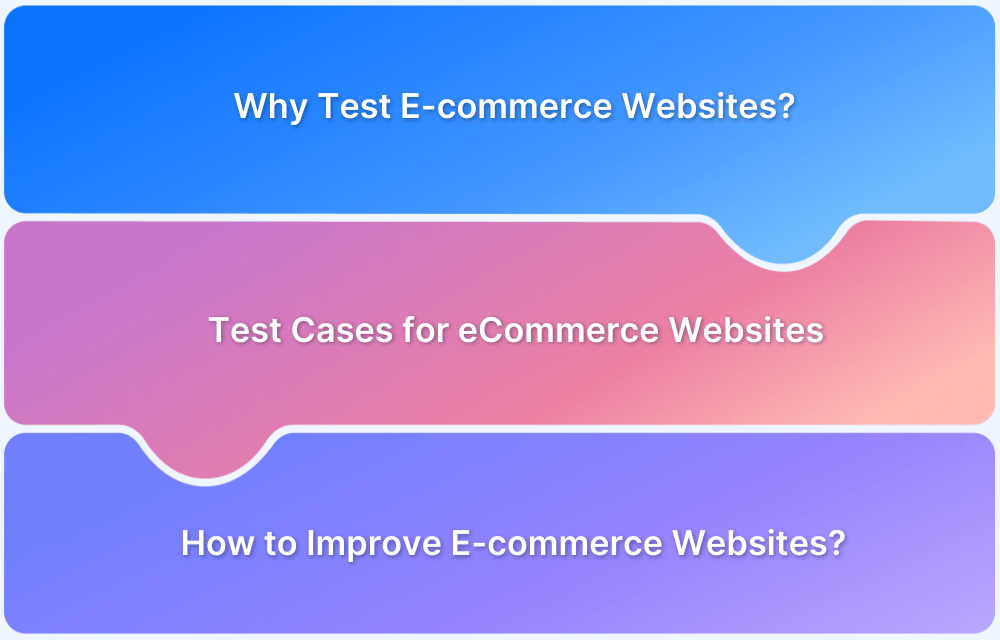In today’s digital economy, payment systems are a key factor in the rapid growth of most companies. Quality Assurance (QA) has an important role in this success, requiring careful planning and resource allocation to ensure smooth and secure transactions.
Overview
What is Payment Gateway Testing?
Payment gateway testing focuses on validating the payment and checkout processes through a comprehensive suite of test cases and procedures. This ensures seamless functionality, security, and a reliable customer experience across all platforms.
Benefits of Testing a Payment Gateway
- Enhanced Security:
- Improved User Experienc
- Reduced Cart Abandonment
- Increased Revenue
- Compliance with Regulations
- Early Detection of Bugs
This article discusses payment gateway testing, how to perform it, benefits, and more.
What is a Payment Gateway?
Online and in-app payments are facilitated by fintech (Financial Technology) intermediaries and regulated by government policies. These payment methods are a relatively recent development in the intersection of computers and finance.
Collecting payments through a technological medium is standardized into a preset format by industrial and market forces. A ‘Payment Gateway’ serves as a channel or medium for online monetary exchange using available fintech solutions.
It acts as an intermediary between your website/app and the payment processor, securely transmitting sensitive payment information and real money. As a result, payment gateway integration across applications is standardized.
What is Payment Gateway Testing?
Payment Gateway Testing refers to the process of verifying and ensuring that payment systems (such as credit card, debit card, or other online payment methods) function correctly. This testing ensures that transactions through these systems are secure, accurate, and work as expected. It is crucial for businesses to test their payment gateways to maintain a smooth user experience, comply with regulations, and protect sensitive financial data.
Benefits of testing a Payment Gateway
Including payments as a feature in your application requires gathering necessary registrations and approvals. It is in addition to the technical integrations and coding before it can be deployed for commerce.
Also, guidelines are set for ensuring users’ security and privacy. Thoroughly testing payment gateway workflows is necessary to ensure compliance and functionality.
Thorough payment gateway testing offers numerous advantages:
- Enhanced Security: Identify and mitigate vulnerabilities to protect sensitive customer data and prevent fraud.
- Improved User Experience: Ensure a smooth and hassle-free checkout process for higher customer satisfaction and conversion rates.
- Reduced Cart Abandonment: Minimize payment failures and errors that can lead to customers abandoning their purchases.
- Increased Revenue: A reliable payment gateway ensures successful transactions and results in increased revenue for your business.
- Compliance with Regulations: Ensure alignment to industry standards and regulations, protecting your business from legal and financial repercussions.
- Early Detection of Bugs: Identify and fix issues early in the development cycle, reducing the cost and effort of fixing them later.
Read More: How to test payments in Shopify
What are the types of Payment Gateway?
There are several types of payment gateways, each catering to specific business needs and technical requirements. They typically range from customized solutions to more standardized flows.
Custom payment gateways are commonly found in large-scale or ambitious projects where the payment process itself is moulded to provide a unique, in-theme user experience per the app.
In most cases, developers use plug-and-play integrations between apps and fintech intermediaries, involving URL redirections and information exchange between the app and the payments provider.
Here is a list of commonly used payment gateway templates:
- Hosted Payment Gateways: Redirect customers to the payment gateway’s website to complete the transaction.
- Self-Hosted Payment Gateways: Customers enter their payment details directly on your website/app, and you handle the transmission of data to the payment processor.
- API-Hosted Payment Gateways (Non-Hosted): Integrate the payment gateway’s API directly into your website/app, allowing for a more customized and seamless checkout experience.
- Local Bank Gateways: Redirect customers to their bank’s website to complete the transaction. Common in specific regions or countries.
- Mobile Payment Gateways: Specifically designed for mobile payments, often leveraging technologies like NFC (Near Field Communication) or QR codes. (e.g., Apple Pay, Google Pay)
- Direct Payment Gateways: Directly connect your business to the payment processor, often requiring higher security standards and compliance requirements.
Read More: Point of Sale (POS) Testing
Payment Gateway Test Case Examples
Any payment workflow, since already standardized and regulated, follows these predefined steps:
– User authentication at login/signup
– Purchase specifications on the application/website
– Checkout with address and delivery instructions
– Payment Gateway for making payment
– Receipt of the transaction
There are many technical theories and frameworks to sort through and select from before actually running proper payment gateway test cases in a properly set test environment.
Here are some examples of test cases to consider during payment gateway testing:
- Successful Transaction: Verify that a standard payment transaction is completed successfully with various payment methods (credit card, debit card, etc.).
- Declined Transaction: Test scenarios where a transaction is failed due to insufficient funds, incorrect card details, or other issues.
- Security Checks: Ensure that security features like CVV verification, 3D Secure (e.g., Verified by Visa), and fraud detection mechanisms are working correctly.
- Currency Conversion: Test the accuracy of currency conversions if you support multiple currencies.
- Refund Processing: Verify the refund process for successful and failed transactions.
- Error Handling: Test how the system handles errors during the payment process, such as network interruptions, server timeouts, and invalid input.
- Integration Testing: Ensure the payment gateway integrates seamlessly with your website/app’s backend systems (e.g., order management, inventory).
How to perform Payment Gateway Testing?
You can perform payment gateway testing using tools like BrowserStack can be executed through the methods given below:
Manual Testing: Involves manually executing test cases, entering payment information, and verifying the results. It is useful for exploratory testing and initial testing of basic functionality. However, it can be time-consuming and subjected to human error, especially for complex scenarios.
- BrowserStack Live
Manual web testing on 3500+ device-browser combinations on the cloud, accessed via a browser. - BrowserStack App Live
Manual app testing on the latest Android and iOS smartphones with real device features, accessed via the browser.
Automated Testing: Automated testing tools can execute test scripts and simulate user interactions with the payment gateway. BrowserStack provides comprehensive cloud-based testing solutions for running payment gateway test cases.
- BrowserStack Automate
Enables automated testing of web applications across multiple browsers and operating systems. You can create automated scripts to simulate payment transactions, verify security features, and test different payment methods. - BrowserStack App Automate
Allows for automated testing of mobile apps on real devices. You can test payment gateway integration within your mobile app across different device conditions.
Read More: How to test checkout flow
Steps to perform Automated Payment Gateway Testing:
Step 1: Sign up or log into a BrowserStack account and select Automate or App Automate. Enter your website URL or upload your app.
Step 2: Choose the desired browser/device combination and start manual testing.
Step 3: For Automation you have to write test scripts using your preferred automation framework (e.g., Selenium, Appium).
Step 4: Integrate BrowserStack capabilities into your test scripts following the documentation.
Step 5: Run your automated tests and analyze the results on the BrowserStack Dashboard.
The choice between manual and automated testing has to be made on a project and team basis. Automated testing is preferred since it offers significant advantages, including:
- Increased Efficiency: Run tests faster and more frequently.
- Improved Accuracy: Eliminate human errors and ensure consistent test execution.
- High Test Coverage: Cover a wider range of test scenarios and edge cases.
- Reduced Testing Time and Costs: Automate repetitive tasks and free up QA resources for more complex testing activities.
Payment Gateway Testing Checklist
Here’s a checklist to help you ensure comprehensive payment gateway testing:
- Functional Testing: Verify all payment methods, currencies, and transaction types.
- Security Testing: Test encryption, authentication, and authorization mechanisms.
- Performance Testing: Assess the payment gateway’s response time and stability under load.
- Usability Testing: Ensure the checkout process is user-friendly and intuitive.
- Compatibility Testing: Test across different browsers, devices, and operating systems.
- Error Handling Testing: Verify proper handling of errors and exceptions.
- Integration Testing: Ensure seamless integration with your website/app’s backend systems.
Sample Scenarios to Automate
Here are some key scenarios to automate in payment gateway testing to ensure secure, seamless, and efficient transaction workflows across your platform.
User Authentication:
- Login/Signup with username, password
- Login/Signup with OTP
- Fingerprint Authentication
- Face-ID testing
End-to-End Payment Flow:
- Navigate to the payment gateway.
- Input payment information.
- Use biometrics or 2FA to authorize payment.
- Confirm payment success or failure message.
Apple Pay/Google Pay Authorization:
- Test if the payment process triggers Apple Pay/Google Pay UI.
- Automate interaction with the payment interface (fingerprint, face ID).
- Handle API responses for successful and failed payments.
Error Handling:
- Invalid card details.
- Failed biometric authentication.
- Network failure or interruption mid-transaction.
Read More: Test cases for E-Commerce websites
Why perform Payment Gateway Testing on real devices?
Testing on actual devices with BrowserStack allows you to ensure compatibility and performance:
- Media Injection: Test camera, microphone, files and audio based workflows to ensure that users can upload pictures and videos and scan QR codes and barcodes.
- SIM Card Emulation: Test with different network carriers and locations.
- Biometric Injection: Verify fingerprint or facial recognition authentication for secure payments.
- Gesture Support: Test gestures like swiping and tapping to ensure a smooth user experience.
- Device and Browser Compatibility: Ensure your application works across various platforms.
- Automation: Automate test cases to improve efficiency and coverage.
- Cloud-Based: Access devices and browsers from anywhere without the need for physical hardware.
Conclusion
Payment gateway testing is vital to guarantee smooth, secure transactions for your users. Automating these tests ensures faster results and enhanced reliability across your platform.
Perform automation payment gateway testing on real browsers and devices with BrowserStack Automate and App Automate tools. These ensure consistent performance and security across all platforms for a flawless payment experience for your customers.



